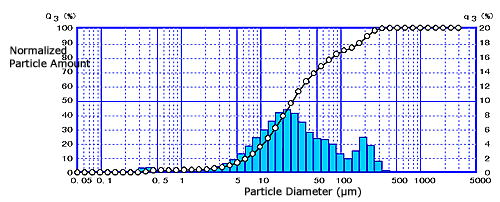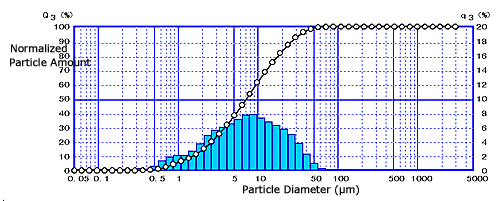Civil Engineering and Powder Measurement
Civil Engineering and Particle Size Measurement
Particle size distribution of Sediment from The River
Long ago, as a small child in elementary school, I was taught the story of a big rock that was washed downstream from the upper reaches of a river, and, that while it was being washed down towards the sea, was gradually broken into smaller pieces until it finally became sand or soil.
In reality, however, the more factually correct story seems to be that rocks, starting with the biggest ones first, sink in order of size to the bottom of the river from the upstream downwards, and small sand or soil flows out to the sea since it does not sink easily. In other words, sediment gradually builds up in riverbeds. The mechanism of how and where sediment builds up is closely related to its particle size distribution.
When sediment builds up in dam lakes, the reservoir capacity decreases, preventing it from functioning as a dam. Also, in rivers where sediment has built up, higher embankments or levees must be built to prevent flood damage. Moreover, cases of coral reefs and marine life being affected by the outflow of sediment into the sea also have been reported.
The necessity of integrated management of sediments throughout the river ecosystem is called for to provide an overall response to these problems. This approach involves attempts to accurately ascertain the volume and quality of sediment moving throughout the entire waters and appropriately manage this in a comprehensive manner to achieve the goals of maintaining "a beautiful water environment," "abundant water resources" and "safe waters" from riverheads down to estuaries and coasts.
This means that detailed data relating to the formation and migration of sediment in rivers is necessary. However, there are still many unclear points, and, if the affect of the seasonal weather and water volume are taken into consideration, particle size distribution must be measured at various observation points in each river over a prolonged period of time.

Example of Measurement of Sediment in River

(Reference)
Katsuhide Yokoyama: The Influence of Particle Size on Turbidity Output and the Instructions for Using Turbidity Sensor in the Field (Japanese), Journal of Hydraulic, Coastal and Environmental Engineering (II), No.698/II-58, 93-98, Feb. 2002


